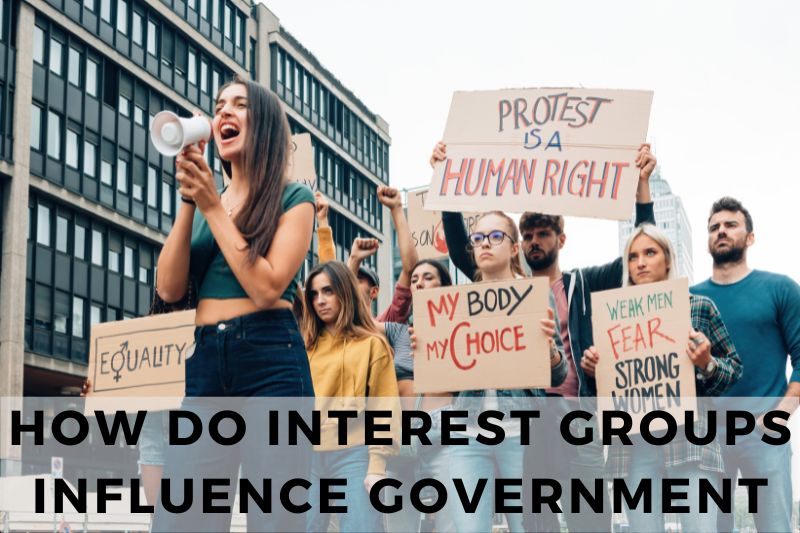
Interest groups play a significant role in shaping government policies and decisions. These organizations, also known as advocacy groups, seek to influence public policy and legislation to benefit their members or promote particular causes.
Through various strategies and tactics, interest groups work to sway lawmakers, government agencies, and the public on issues that align with their interests. In this article, we will explore the different ways in which interest groups exert influence on governments, from direct lobbying to grassroots mobilization.
What Are Interest Groups?
Interest groups are organizations that aim to influence government decisions, policies, and laws in ways that benefit their members or support specific causes. They can represent a wide range of sectors, including business, labor, environmental advocacy, civil rights, and more. Interest groups differ from political parties, as their primary focus is not to run candidates for office but to promote particular policies or issues. These groups often work behind the scenes or in public arenas, trying to shape legislation, public opinion, and political discourse in ways that align with their goals.
How Interest Groups Influence Governments
Interest groups use a variety of tactics to influence government policies and decisions. These methods include direct lobbying, financial contributions to campaigns, public awareness campaigns, legal actions, grassroots mobilization, providing research and expertise, coalition building, and influencing voting blocs. Each of these strategies allows interest groups to exert pressure on lawmakers, regulators, and public opinion to advance their agendas.
#1. Lobbying
Lobbying is one of the most direct ways interest groups attempt to influence government. It involves engaging with legislators and government officials to present their views, offer information, and make requests for favorable policies. Lobbyists often meet with policymakers, participate in hearings, and engage in behind-the-scenes discussions to advocate for specific legislation or regulations that benefit their interests.
#2. Campaign Contributions
Interest groups often contribute to political campaigns to support candidates whose policies align with their goals. By donating to political parties or individual candidates, these groups gain access to political figures and influence their positions on important issues. Political action committees (PACs) are commonly used by interest groups to organize and manage financial support for candidates.
#3. Public Campaigns
Public campaigns are designed to shape public opinion and create pressure on lawmakers by rallying public support for a cause. Interest groups use media campaigns, advertising, social media, and public events to raise awareness about issues and sway public sentiment. A well-organized public campaign can put significant pressure on politicians to act in favor of the group’s position.
#4. Litigation
Litigation is used by interest groups to challenge laws and regulations that they believe are unjust or detrimental to their causes. By taking legal action, these groups seek court rulings that can influence public policy. Court cases, especially those that reach higher courts, can set precedents that impact future laws and regulations, giving interest groups another tool to affect government decisions.
#5. Grassroots Mobilization
Grassroots mobilization involves organizing ordinary citizens to take action on behalf of a cause. Interest groups encourage their members and the public to contact lawmakers, participate in protests, or engage in petitions to demonstrate widespread support for a policy change. This method leverages public involvement to create a groundswell of pressure on policymakers.
#6. Research and Expertise
Interest groups often conduct research to provide data and analysis that support their positions on various issues. By offering studies, reports, and expert testimony, these groups seek to influence decision-makers by framing the debate with evidence that backs their desired policies. Their research helps to build credibility and persuade policymakers about the validity of their arguments.
#7. Coalition Building
Coalition building involves interest groups forming alliances with other organizations that share similar goals. By joining forces, they can pool resources, strengthen their political influence, and present a unified front to policymakers. Large coalitions increase the visibility of a cause and amplify the group’s impact in the political arena.
#8. Endorsements and Voting Blocs
Interest groups often endorse candidates or political parties that support their policy positions. These endorsements can sway voters by signaling which candidates align with their interests. Interest groups may also organize voting blocs, encouraging their members to vote as a unified group for specific candidates, thereby influencing election outcomes and political power dynamics.
Conclusion
Interest groups have a significant impact on government policies and decisions, using a variety of methods to influence lawmakers, regulators, and public opinion. From lobbying and campaign contributions to public campaigns and grassroots mobilization, these groups employ diverse strategies to advance their agendas.
By leveraging research, building coalitions, and influencing voting behavior, interest groups shape the political landscape and ensure their interests are represented in government decisions. The ways in which interest groups exert influence are complex, but their role in the political process is undeniable, making them a key player in shaping the direction of public policy.
